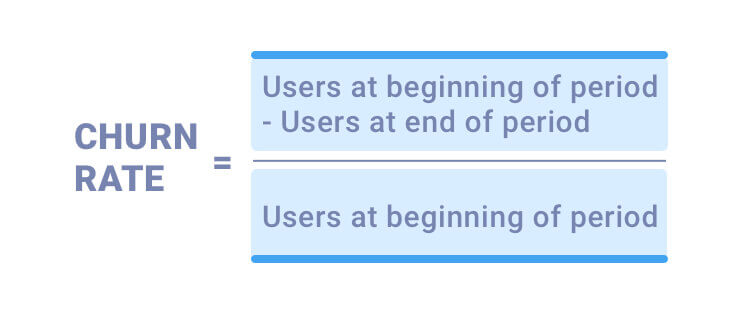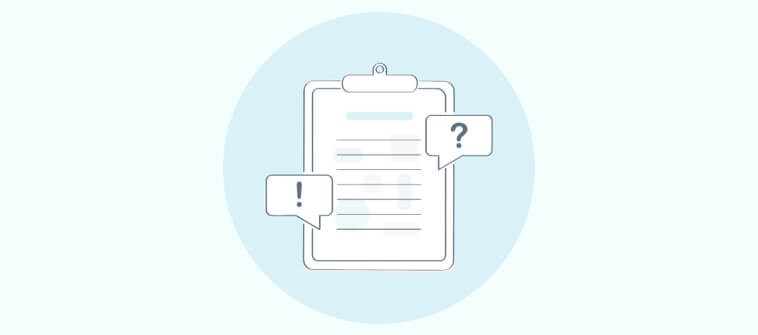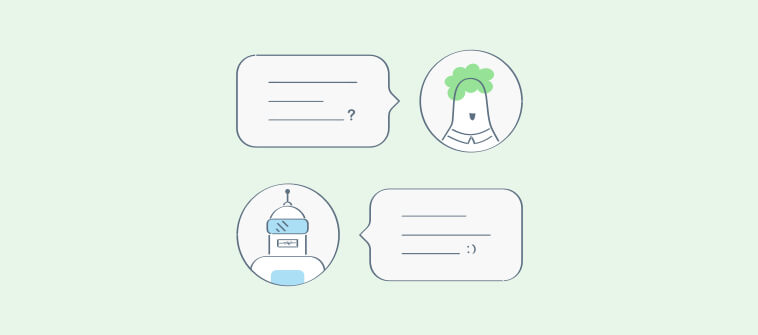“Have we satisfied our customers? Did they find our services up to their expectations?”
If you’re asking these questions every time you offer your services, you are a customer-centric organization. But simply asking these questions isn’t enough to gauge whether they are satisfied or not. You need to measure the right customer satisfaction metrics to answer these questions.
Customer satisfaction metrics help you back your customer-centric mindset and identify areas (both positive and negative) responsible for leaving an impact on the overall brand experience.
So, let’s dive in.
What are Customer Satisfaction Metrics?
Customer satisfaction metrics help you measure how happy your customers are with your services and whether they found their overall experience satisfactory. Besides gauging their satisfaction, some metrics also offer insights into whether the customers are loyal to your brand.
You can also identify different loopholes in your service and make changes to them to create a better experience for customers in the future. You can also use different metrics to measure customer satisfaction for factors like website navigation, brand loyalty, product performance, and shopping experience.
Why is it Important to Measure Customer Satisfaction?
Peter Drucker once said,
“You can’t manage what you can’t measure.”
We couldn’t agree more.
However, the intent of measuring customer satisfaction isn’t limited to managing it. There are other reasons why companies feel encouraged to use metrics to measure customer satisfaction, one of them being the ability to increase customer retention and loyalty.
A study found that 87% of satisfied customers are more likely to upgrade services and are less likely to cancel due to their loyalty towards the brand. That means satisfied customers turn out to be loyal customers for the business and are easy to retain. That’s not all. Loyal customers are also brand advocates as they contribute effectively towards word-of-mouth marketing.
These aren’t the only benefits a business can gain from metrics for customer satisfaction. These can also help you in:
- Preventing customer churn
- Improving customer engagement
- Gaining better profits by recommending the right products during an upsell opportunity
Benefits such as these make it all the more crucial for a business to calculate customer satisfaction with the help of the right metrics.
7 Metrics to Measure Customer Satisfaction
With a clear understanding of why we need to measure customer satisfaction, it is time to dive into the seven essential metrics that help your business carry out this task. This section aims to understand the types of metrics that measure customer satisfaction and how they are calculated, and what measures you should take to improve them.
1. Customer Satisfaction Score (CSAT)
The best way to know if your customers are satisfied with your brand or not is to calculate the customer satisfaction score. This metric helps you identify if your customers are satisfied with your services and the products you sell or if your brand meets their expectations.
To calculate this metric, you need to roll out customer satisfaction surveys to customers once they’ve made a purchase or had a recent interaction with your support team.
Once you receive the results, they will have to be organized in the following manner.
1 – not satisfied at all
2 – somewhat unsatisfied
3 – indifferent
4 – somewhat satisfied
5 – very satisfied
How to Calculate Customer Satisfaction (CSAT) Score?
“How to measure customer satisfaction?” is a question that a lot of you ask. Well, with a direct metric, you’ll have know-how.
Once you organize the results on a scale of 1-5, you will have to divide the number of satisfied customers (4 and 5) by the number of survey responses and multiply the obtained number by 100 to convert it into the percentage of the satisfied customers.
| Customer Satisfaction Score = Happy customers / Number of customers asked |
How to Improve Your Customer Satisfaction (CSAT) Score?
You need to have an action plan that helps you improve your CSAT score effectively. And here are a few measures we’d recommend you take to improve your CSAT score.
i. Offer Instant, Proactive Support
Your customers will be happy and appreciate your efforts in being proactive in offering them support. You can use a live chat to make that happen for your customers. Add a live chat widget on your website to monitor your visitor’s browsing behavior and initiate a chat in strategic moments.
ii. Capture Customer Feedback Every time
Once a chat or support ticket comes to an end, you need to send in a CSAT survey to your customers to capture their feedback. This will help you learn if they were happy with your services or not. It will help your operators learn what they can do to improve your customers’ experience in the future.

You can even add user feedback tools like Qualaroo on your website to know if your visitors are satisfied with what they’ve found on your website.
Besides these two measures, you can also:
- Offer more channels for support and communication to help your customers reach out to your brand in times of need.
- Notify your customer once their feedback has been implemented by your company and then again ask for their feedback.
Pros & Cons of Customer Satisfaction (CSAT) Score:
Pros
- It is easy to understand and inexpensive to implement
- It helps you capture data on a three-, five- or ten-point survey scale
Cons
- Unsatisfied rarely complete this survey which is why your response rate may be low
- The result leaves you in ambiguity because the satisfied responses can be seen as both “great experience” and “okay experience”
2. Net Promoter Score (NPS)
Net Promoter Score (NPS) is a key customer satisfaction metric to help you measure customer loyalty. You can even learn how likely your customers are to recommend your business to others. Besides getting insights on whether your customers are loyal to the brand or not, this metric also helps you understand if customers are satisfied with services or not.
How to Measure Net Promoter Score?
One of the tools to measure customer satisfaction is through NPS software. It’ll help you create an NPS survey that can be sent to all your customers once every quarter. The results are an indicator of customer satisfaction and loyalty.
Keep your survey questions direct to help customers answer them quickly, like “How likely are you to recommend our brand to your family, friends, or colleagues on a scale from 0 to 10?”
Once you send the survey to your customers, you’ll collect data that can be categorized into three groups:
- Detractors – Customers who gave you a score in the range 0-7
- Passives – Customers who have scored you in the range of 7-8
- Promoters – Customers who gave you 9-10
After this stage, it’ll be easier for you to calculate the NPS for your business with the given formula.
| NPS = % of Promoters – % of Detractors |
Learn More: How to Calculate Net Promoter Score
How to Improve Your Net Promoter Score (NPS)?
NPS is one of the key metrics to improve customer satisfaction. That’s why you need to emphasize more on how to improve this score efficiently. And don’t worry, we’re here to help you get started with these strategies.
i. Understand the Root Cause for Low NPS
Your first step towards improving NPS is to understand why customers gave your brand a low score in the first place. You may wonder how you can do this without disturbing your customers again. Well, here’s what we suggest.
You can add a separate suggestion box below the NPS scale in the survey. While some customers may simply rate your services and submit the form, some may end up giving you more feedback for your assistance. So, always look out for such customers.
ii. Train Your Employees
A lot depends on your employees when it comes to improving & achieve customer satisfaction and boosting loyalty. That’s why you must train your customer service team, especially your customer-facing employees, to create an excellent experience for customers that results in more brand promoters.
Besides these two suggestions, we’d also recommend you to:
- Learn to collect customer feedback strategically or else you will end up getting incomplete results.
- Use customer feedback to help your employees understand the relevance of promoters.
Pros & Cons of Net Promoter Score (NPS):
Pros
- It helps you assess customer sentiment towards a brand
- It’s quick and enables you to collect feedback faster
Cons
- A single score won’t help your brand define the problem that led to a particular score
- The score divides customers into three categories only, which means you are restricted to a defined survey response scale
3. Customer Effort Score (CES)
Customer Effort Score (CES) helps you measure a customer’s engagement with your business during and after buying your products/services. The customer satisfaction metric also reflects the level of ease your customers have while interacting with our support team.

How to Measure Customer Effort Score (CES)?
You can create and send a customer effort score survey once a customer buys a product from you or right after they complete a support conversation with your operators. The values captured via this survey can be divided into different categories.
However, make sure you know which scale you plan to use as this CES scale can have values upto 5, 7, or 10. Once your results are captured under the following scale, here’s how you can calculate this metric.
| Customer Effort Score = % of Agree – % of Disagree |
How to Improve Customer Effort Score (CES)?
To improve your CES, you need to make more efforts to keep your customers satisfied with your services. Here’s what you can do.
i. Offer Support at Every Touchpoint
Let your customers know that they’ll find help whenever needed. For this, you need to make sure that your operators track visitor behavior and initiate a chat when they seem stuck on a page for long. This proactive approach at every touchpoint can help you improve your customer effort score.
ii. Improve Your Self-Service Platform
Another way to let your customers know about your efforts is to help them find answers faster. You can do this by providing knowledge-centered support and updating your knowledge repository with recent commonly asked questions. We’d even recommend you update it regularly to make sure you are up-to-date with various queries your customers have regarding your product or services.
Besides that, you can also opt for other measures to improve your CES like:
- Offering support to customers based on their native language
- Work towards reducing average response time
- Gather more user and customer feedback to improve your services
Pros & Cons of Customer Effort Score (CES):
Pros
- CES helps you get strong predictions of the future purchase behavior
- Allows customers to leave additional feedback through comments
Cons
- It restricts you to an individual action ignoring other aspects
- This score doesn’t give you the option to categorize scores into different categories (like NPS does)
4. Customer Churn Rate (CCR)
Customer Churn Rate (CRR) is another metric that can help you understand if your customers are satisfied with your brand or not. One of the customer satisfaction KPIs enables you to identify the percentage of customers who gave up on using your products or services. Giving up on your products and services would mean closing their accounts, switching to another brand for similar products, or canceling subscriptions.
In a nutshell, customers who aren’t active enough to invest or engage with your services can be an indicator to learn that your business is facing customer churn.
How to Measure Customer Churn Rate (CCR)?
It is easy to calculate the customer churn rate for your business. Here’s a formula to help you out.
| Churn Rate = (Users at the beginning of period-Users at the end of period)/Users at the beginning of a period |
How to Improve Customer Churn Rate (CCR)?
With the help of a few measures, you can quickly work towards improving your customer churn rate. Let’s take a look at them below.
i. Work on Building an Excellent Customer Experience
Your first step towards reducing customer churn rate is building better experiences for your customers. You can do this by proactively offering support to customers, giving them the option to connect with your brand via more platforms, and personalizing the customer support experience.
ii. Understand Why they Decided to Leave
For this, you need to send out feedback forms to your customers to learn why they decided to opt out of your brand. This will help your teams narrow down the reasons and improvise your services as per the customers’ growing needs.
Besides these measures, you can also try out the following:
- Increase engagement with your customers regularly
- Remind your customers of the value your brand can offer
- Target the right audience to avoid an increase in churn rate
- Offer incentives that encourage your customers to stay with the brand
Pros & Cons of Customer Churn Rate:
Pros
- Helps you learn how many customers stopped doing business with you
- It’s easy to calculate
Cons
- Doesn’t help you identify the reasons that lead to churn
- Requires you to refer to data from a lot of analytics tools to calculate the churn rate
5. Customer Health Score
Customer Health Score (CHS) is an essential metric that helps your business understand how likely your customers are to leave your brand or spread the word about it. With the help of this metric, you can easily focus on customers who are frustrated and work on strategies that result in their satisfying experience.
How to Measure Customer Health Score?
To measure this metric, you need to consider the following two tips.
- First, it is essential to define the attributes of a successful/unsuccessful customer for your business
- Second, consider priority actions that help you understand the customers’ health, such as login frequency, referrals, and more
How to Improve Customer Health Score?
Your business needs to understand why they are irritated or unhappy with their experience with your brand to improve customer health scores. For this, you’ll have to make sure:
i. Connect & Engage Instantly
You connect with your customers regularly and understand their current challenges and what they expect in those situations. You can try connecting with them via social media platforms or a real-time communication platform like live chat.
ii. Collect Regular Feedback
Another measure you can consider when thinking of improving your existing customer health score is to take regular customer feedback. This will help you identify new problem areas and rectify them faster. This way, you’ll have more satisfied customers for your business.
Learn More: 12 channels to Collect Customer Feedback and Make the Most of It
Pros & Cons of Customer Health Score (CHS):
Pros
- It helps you divide results into three categories
- It helps you consider priority actions that give you more insight into customer’s health
Cons
- You can’t identify the reasons why your customers are frustrated and come up with focused strategies
- You will have to take into account a lot of actions like login frequency, referrals and others to calculate customer health score
6. Abandonment Rate(s)
Abandonment Rate can help you understand what factors discouraged your website visitors and customers from completing the checkout process. Tracking the shopping cart abandonment rate lets you get more specific insights into why your online revenue may go up or down. This metric can also help you identify the hiccups that hamper conversion on your website.
How to Measure Abandonment Rate?
To measure the shopping cart abandonment rate, you need to have to use the following formula:
| Shopping Cart Abandonment Rate = (Completed purchases / # shopping carts created) x 100 |
How to Reduce Abandonment Rate?
Cart abandonment can happen due to various factors. It can happen because the check-out process may seem complicated, or the customer may need advice for a product and not receive it during strategic moments. That’s why you need to take into account the following initiative to reduce your abandonment rate.
i. Use Popup User Feedback Surveys
Suppose if you see your customers leaving their cart before checkout, then set specific rules and conditions that help you trigger a popup feedback survey. This will help you understand the reasons why your customers abandoned their carts before completing the checkout process.
Read & Implement: 250+ Survey Question Examples For Your Feedback Forms
ii. Initiate a Chat in Strategic Moments
You can use live chat solutions like ProProfs Chat to initiate a chat with your customers to avoid cart abandonment on your website.By initiating a chat in strategic moments, your team can identify the reasons or challenges your customers may be facing and tackle them in real-time to prevent cart abandonment.
Read: Reduce Shopping Cart Abandonment Using Live Chat Software
Pros & Cons for Abandonment Rate:
Pros
- Helps you keep a track of how many visitors ended up abandoning their carts on your website
- You can identify the reasons that lead to abandonment rate
Cons
- You need to refer to a third-party tool like Google Analytics to procure data and then calculate the abandonment rate
7. Customer Acquisition Cost (CAC)
Customer Acquisition Cost (CAC) is another metric your business should evaluate to measure the investment required in acquiring and retaining customers,the service quality you aim to maintain, and overall customer satisfaction goals.
This metric represents the cost of transforming an interested person into a customer. However, it also helps you understand what measures you took to satisfy that interested person to encourage them to become a customer.
How to Measure Customer Acquisition Cost (CAC)?
The metric is quite simple to calculate. You have to use this simple formula to get the CAC for your business.
| CAC = Total cost spent on sales & marketing for a period / Number of customers acquired in that period |
However, when you calculate the total sales and marketing cost for a period, you need to make sure you have all the expenses tracked in one place. Some of the common expenses you have to include are:
- Cost of implementing technological solutions
- Content creation cost
- Advertisement’s financial investment
- Cost of releasing marketing campaigns
How to Reduce Customer Acquisition Cost (CAC)?
Here’re a few steps you can take to reduce the customer acquisition cost for your business.
i. Use Live Chat to Acquire Customers in Real-time
Once you add a live chat feature to your website, it’ll be easier for your business to reduce the support cost and customer acquisition cost. Wondering how? Well, live chat enables your sales team to initiate a chat in strategic moments that helps them increase the possibility of converting a lead into a customer.
But besides this, live chat also helps you market products and services to visitors on your website. Tools like ProProfs Chat make that happen for you by giving you access to features like Announcements.
This feature will help you create announcements for product updates, feature upgrades, flash sales, news updates, and more. It can help you in acquiring new customers or create cross-sell and upsell opportunities without added investments.
ii. Add Social Proof on Your Website
Let your site visitors know what your existing customers think about your services on your website. You can do this by showcasing your customer testimonials on the website like below:
It will increase your credibility as a brand and encourage visitors to know more or even motivate them to purchase their visit. In short, when you work on increasing your credibility as a brand, you also improve your chances of acquiring new customers.
Pros & Cons of Customer Acquisition Cost:
Pros
- This metric represents the cost you invest in transforming an interested person into a customer
- Identify measures your team takes to satisfy customers
Cons
- It doesn’t help you get results that reflect customer satisfaction
Measure Pivotal Metrics to Boost Customer Satisfaction
It all boils down to keeping your customers satisfied with your brand. After all, satisfied customers are more likely to keep coming back to your brand, and they don’t mind recommending your brand to friends and family.
But the question is, how will you know if your customers are satisfied with your services?
For that, you need to make sure you measure and track crucial metrics like Net Promoter Score, Customer Satisfaction Score, Customer Effort Score, and others periodically. This will help your business to identify loopholes in your existing products and services effectively.
Now that we’ve understood the most important metrics that help you measure customer satisfaction, let’s take a look at some of the frequently asked questions below.
What leads to high customer satisfaction?
It is said that great experience results in high customer satisfaction. This experience could be related to purchasing a product, using the product, or even getting a customer support team’s insight into using a specific service. But the overall experience a customer gains during its journey with the brand becomes a deciding factor for high satisfaction rate.
What is a good customer satisfaction score?
A good CSAT score falls under the range of 75%-85%. However, this may vary based on the industry your business belongs to.
How to measure customer satisfaction without surveys?
There are a few strategies that can help your brand measure customer satisfaction without the use of surveys. You can start with social media sentiment analysis, real-time customer correspondence, response on promotional offers, and others.
Which metrics do you consider are the most crucial factor in measuring customer satisfaction?
To measure customer satisfaction, you can primarily use CSAT Score, Customer Effort Score, and Net Promoter Score.
FREE. All Features. FOREVER!
Try our Forever FREE account with all premium features!








